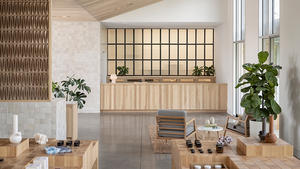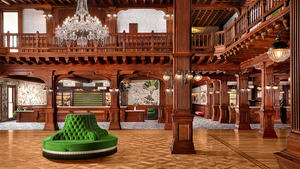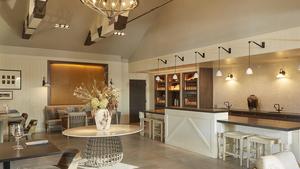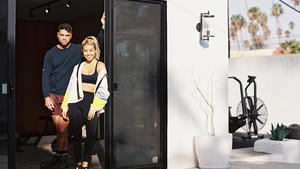Once you’re in the door, there’s plenty of advice floating around about style, project management, budget and all the rest—but how do you actually get the job in the first place? We’re asking designers to peel back the curtain and walk us through how they landed a project, step by step. This week, Atlanta designer Nina Nash of Mathews Furniture + Design discusses one upside to divorce.
Give me the backstory on this project.
I have to admit, divorces can be great for our business. Our jobs are mainly repeat clients and referrals, so when a marriage goes south, we typically get a call from both parties at once to do their new, separate residences. It can be hard, but it’s best to keep it professional and not pick sides—especially if you want both jobs!
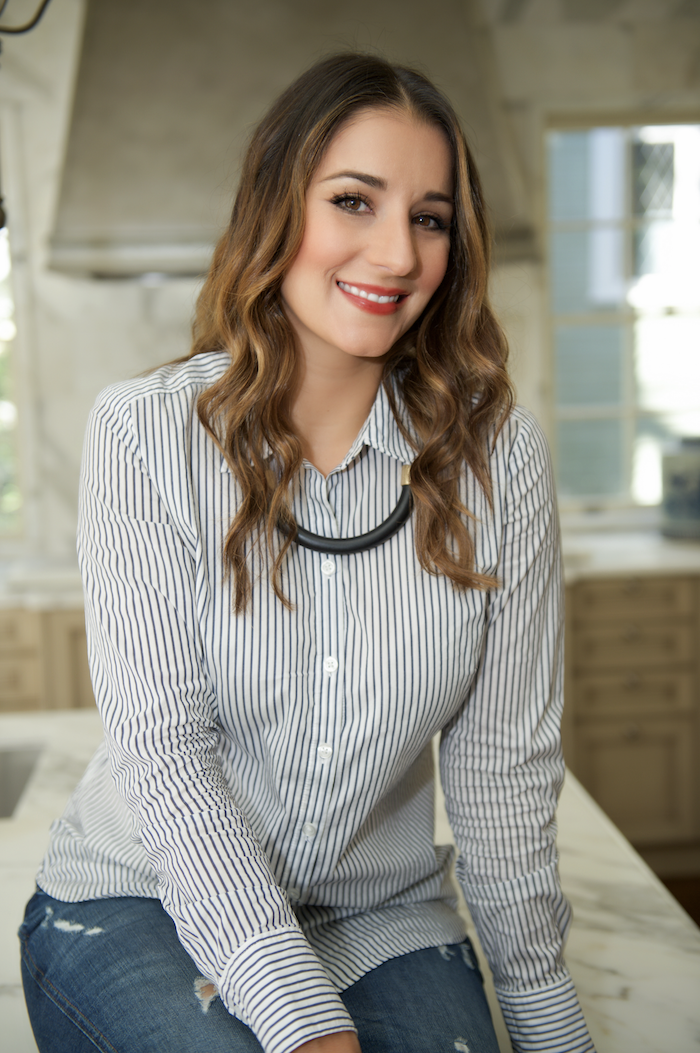
It’s interesting how dynamics change once the couple is no longer together. This woman who used to say her husband “won’t let her spend a lot” suddenly has zero hesitations on budget and calls all the shots. We finally updated the whole house and created an amazingly glam “Champagne room” for her in his old study! Meanwhile, her ex got to have a say in what is in his own home for the first time in 20 years. He wanted a sleek bachelor pad in a contemporary high-rise penthouse.
That’s partially what I love about what I do: It’s such an intimate and interesting position to be in, and no job is like the other—from the decor to the dynamics. You just never know what you are going to get into. I feel like I am a psychologist half the time, not just a designer! On a positive note, you’re there to help [your clients], and they feel like they have you to lean on during this awful period.
Had you been working with this couple for a while?
My partner, Don [Easterling], has been with them for about 20 years. We had done their whole house here in Atlanta. And we had just redone their dining room and the master bedroom when everything kind of fell apart out of the blue, to be honest with you.
In general, how do you work with couples that don’t agree on things?
There's usually somebody out of the two that has a stronger opinion. If I already agree with what they’re saying, I'll probably endorse that idea a little bit more. Most couples usually will end up coming to an agreement.
We have found that most of the time, you will close the deal 100 percent when you have the couple together and you’re dealing with them in person. That’s key, because you don't have one person try to translate it for the other!
In general, how do you pitch clients?
You go out to their house, see what they want, gather all the information, do the measurements. We have a few meetings and then we do the presentation in our office. Don and I are really good listeners; nine out of 10 times, the clients approve everything within the first meeting.
We’ll go room by room, and I have a template that I do for each piece of furniture with all of the fabrics and finishes. Our office is within a 15,000-square-foot showroom, which helps, because we like people to be able to see things and sit on things. That also seals the deal when people can touch it, feel it, sit on it and see the scale of the pieces in person.
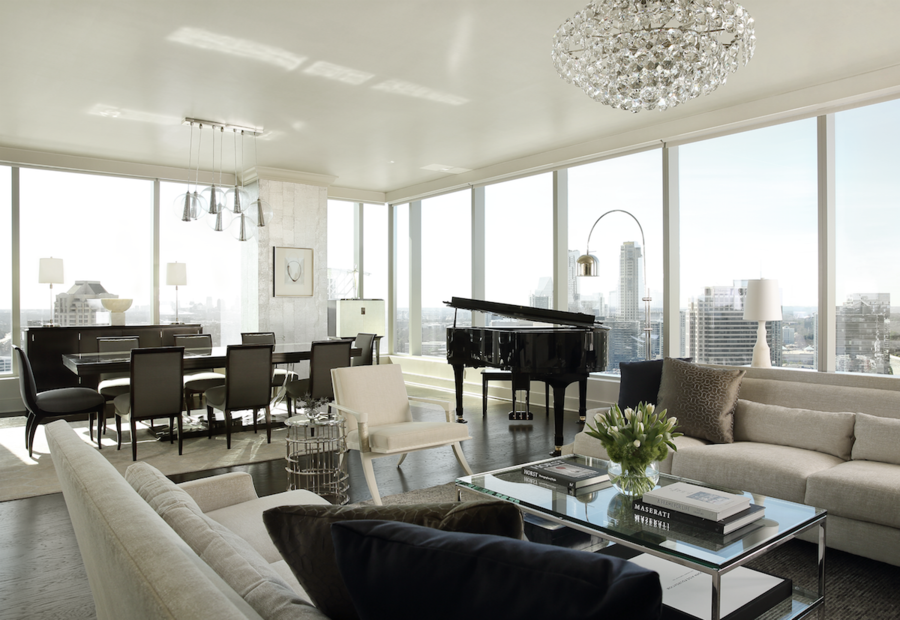
What do you bring with you to the initial meeting?
I take all the pictures just on my iPhone of the house, do all the measurements by hand, with a tape measure, and bring a notebook because I'll sketch out the rooms. Sometimes they don't have a floor plan if it's an older house. Don and I look around and have our own conversation in front of them about what needs to be done.
How did you differentiate yourself from other designers they may have been considering?
Don has a great personality—he's the Southern guy and really knowledgeable. He's been doing this for 30 years. He has this way of making people feel like he's known them forever. I also think making them feel comfortable is about listening. Walking around the house with somebody, you want to listen [instead of] giving ideas right off the bat.
How do you follow up with them after that first meeting?
We have the presentation and show them everything. We won't talk about money here—that may sound strange, but for us, it hinders the whole process. Clients get scared when they hear these big numbers. Also, I feel like a lot of designers nickel-and-dime house calls, but we don’t do that. It's not like we’re going to show up at your house and be like, “Okay, our consultation fee is $600 just to have a conversation.”

Tell me how you approach pricing, and how you explain it.
We don’t give contracts. I know it sounds strange, but we've never been in a position where we needed to. We make money off of the furniture, products, lighting, rugs and accessories clients are buying from us. That's always been our business model and it works really well for us. We keep great margins, but we also don't ever overcharge people, and we show clients how much each piece costs. Sometimes we'll just say, “Here's your living room, it’s $35,000; here’s your dining room, it’s $25,000.” It really depends on the client and we have to read the situation.
Sometimes less is more. If you start handing people contracts and tell them that you're $450 an hour—that would scare the hell out of me.
Nine out of 10 times they end up spending more than they thought they were going to but they’re OK with it, because they're happy with what they're getting. We always like to protect our clients, so we let them know that if there's ever a problem with anything, we will stand behind it. We basically think about how we would want to be treated.
When do you collect payment?
We take 50 percent down of whatever costs they're purchasing, then get the rest of the payments [after installation]. Sometimes we’ll collect the balance before the delivery— like if it's out of state, we’ll typically collect it beforehand just to cover our backs. I am not good with the numbers, that's Don’s specialty—he's the one that spits out, “It’s $250,000 for everything we went over today.” That makes me nervous.
Any other advice?
Honesty is really important as far as finances. Don't overcharge people, because that comes across in your presentation—they're not stupid! Don't lie about lead times. Do a good job. Be a kind person. These people are spending a lot of money with you. They trust you. You're in their home.
And if you don't know what you're doing, take the time to learn. Don't act like you know what you're doing! I go on factory tours, I learn about the industry. I go to High Point twice a year and I've been doing that for 10 years. I think that goes a long way. When I'm presenting this furniture that's expensive, I have the knowledge to back up what I'm saying: “This is why this piece cost so much; look, this is hand-painted, I watched somebody do this by hand.” If you are actually an expert in your field, it will only help you.

















